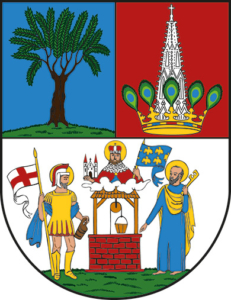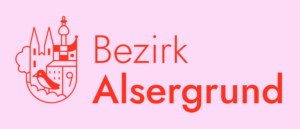Gender Relations in Literary Criticism
The Association of Feminist Authors (≠igfem) represents a feminist agenda within the literary field and beyond. Much improvement is needed for women to achieve gender equality in the literary community. We identified areas in need of drastic change with the help of academic studies from Veronika Schuchter and Nicole Seifert.
Publishers, literary magazines, and juries claim to judge texts solely on their quality and attribute the clear dominance of publications written by men to coincidence. However, analysis of published texts shows that the so-called “literary quality” is largely determined by non-literary factors such as gender, sexual orientation, or the writer’s origin. Our society and cultural fields are shaped by sexist, homophobic, and racist structures that benefit some people and disadvantage others. Veronika Schuchter describes the significant influence of gender on literary criticism. She identifies three dominant tendencies in the reviewing process of literary critics:
- Men review men
Schuchter’s study conducted in 2016 shows that male critics mainly review texts from male authors, while the range of publications that female critics review is more balanced. Seifert noticed a similar tendency in universities where lectures on female authors are almost exclusively conducted by female lecturers and attended by female students. Schuchter attributes the preference for texts by male authors to reading socialization, which starts in early childhood and is strongly influenced by the literary canon taught in schools. - Exclusion of the Feminine
Masculinity is established as the norm in the literary field through the explicit exclusion of the feminine. Certain textual qualities are attributed to gender. While male writing is considered analytical, distant, and rational, female writing is associated with emotionality and therefore regarded as trivial, non-literary, and unworthy of literary reviewing. Most Male critics reinforce their masculinity by devaluing female texts and their readers, creating hierarchies in which they position themselves above female authors. Particularly, texts that criticize patriarchy often receive negative reviews. - Performance of Virile Masculinity
Schuchter points out the performance of virile masculinity in the literary field and highlights various areas where it is evident:
- So far, only 11% of the Nobel Prizes in Literature have been awarded to women.
- 60% of the books published annually are written by men, and only 40% by women. Usually, the higher the prestige of a publisher, the lower the number of published books authored by women.
- 88% of books about authors focus on men, and only 12% on women.
- Up to 90% of anthologised poems are written by men.
In school curricula and on reading lists, male authors and their works are given higher recognition. This lack of representation for female authors means that children are not provided with female role models. As a result, male writers are established as superior. Despite the many impressive female authors of the past, their works have been forgotten due to a lack of effort to keep them in memory. Consequently, the works of female authors are underrepresented in bookstores and libraries today. Throughout history, the work of female authors has not received equal appreciation and has not been canonized. Even today, literature that specifically describes female experiences is ignored and portrayed as flawed by literary critics. This often leads to personal attacks, intimidation, and exclusion of female authors from the public sphere.
To address the disadvantages faced by female authors, Seifert suggests several measures. These include implementing quotas for scholarships and grants, offering support for caregiving writers, and providing funding to publishers who prioritize equality. Additionally, reforming the literary canon and curricula at educational institutions, as well as rediscovering forgotten or marginalized female authors, could help rectify the unequal conditions in the literary field. It is crucial that publishers, editors, readers, and authors work together to address these issues.
References:
Pohl, Peter C., and Veronika Schuchter. Ausweitung einer Kampfzone. In: Das Geschlecht der Kritik. Studien zur Gegenwartsliteratur. Edited by Peter C. Pohl and Veronika Schuchter. Munich: edition text + kritik, 2021, pp. 7–21.
Schuchter, Veronika. Adam und Eva der Literaturkritik. Literaturkritik als Männlichkeitsdiskurs. In: Das Geschlecht der Kritik. Studien zur Gegenwartsliteratur. Edited by Peter C. Pohl and Veronika Schuchter. Munich: edition text + kritik, 2021, pp. 46–64.
Seifert, Nicole. Misogynie in der Literaturkritik: Wie Autorinnen besprochen wurden und werden. In: Das Geschlecht der Kritik. Studien zur Gegenwartsliteratur. Edited by Peter C. Pohl and Veronika Schuchter. Munich: edition text + kritik, 2021, pp. 80–93.
Seifert, Nicole. Frauenliteratur. Abgewertet, vergessen, wiederentdeckt. Cologne: Kiepenheuer & Witsch, 2021. Wernli, Martina. „Figuren der Umkehrung. (Gegen-)kanon, Auszählen und Gender in sozialen Medien.“ In: Das Geschlecht der Kritik. Studien zur Gegenwartsliteratur. Edited by Peter C. Pohl and Veronika Schuchter. Munich: edition text + kritik, 2021, pp. 177–195.
















